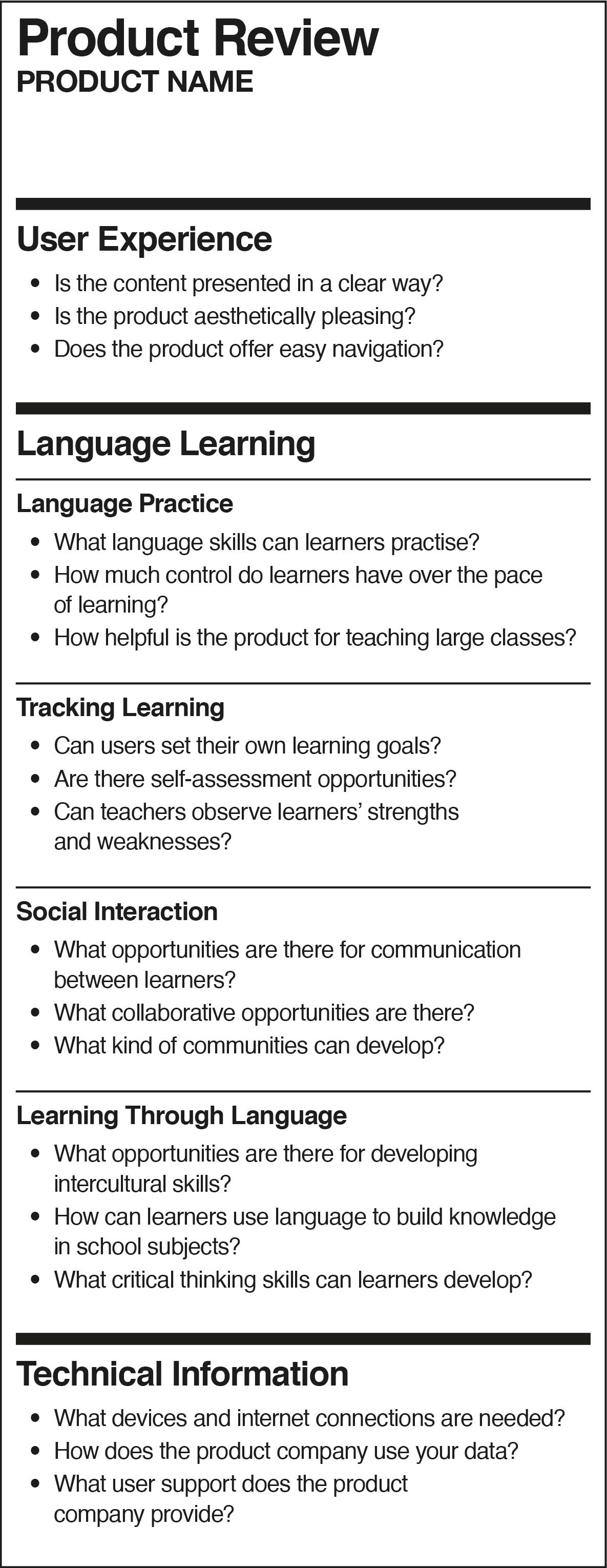How to choose digital resources and tools for your classroom
- The Digital Teacher
- Where teaching meets technology ... read more
-


Do you find it confusing to choose the best digital learning products and tools for your classrooms and your learners? English teachers invariably want to give their learners the best opportunities for learning, engaging with and using English. But selecting which technologies to bring into the classroom can be daunting.
The most important consideration to bear in mind is that any technology used should support and enhance the learning process or, at the very least, make it easier to achieve learning outcomes. There are four research-based principles which are crucial to consider when evaluating a new digital tool or product.
User experience
Can people use the product easily? Usability is the first really important issue. We know from research that people find it hard to focus on learning if they are distracted by other things – like where the ‘next’ button is, how to upload, or flashing adverts on the screen (Harrison, Flood and Duce, 2013). So ask yourself whether the product or app you’re interested in is intuitive to use, and attractive. Of course ‘intuitive’ varies by familiarity with computers, and ‘attractive’ can be a matter of opinion. So think about who the product is appropriate for, who is going to use it – and why. What works for children might not work with adults, and what works for large classes might not work for small groups.
Language learning
Why do we want to use this particular technology or product? The reasons for using any resource need to be clear. There is evidence that new technologies only provide added benefit when they meet specific learning needs (Tamim et al). So perhaps most importantly, teachers need to identify what area of learning the selected product will support, and how it will generate feedback that is useful for learning. Ask yourself whether the content is suitably challenging for the target users, whether the opportunities for practice are useful and whether there are meaningful regular assessments.
What opportunities are there to develop learners’ other knowledge/skills through this product, and how? A language learning app might enable learners to collaborate more effectively, for example, or provide them with more authentic input. Or it might help them structure and track their learning goals. Knowing what questions to ask is all part of a teacher’s professional development and a long-term journey of discovery. Suffice to say, it’s good to read widely, discuss widely with your peers, and experiment!
Technical information
Finally, a word on technical issues.
Some technical topics like data usage, security policies and user support options can be useful for teachers to consider, especially when planning how long to use the technology, and when reflecting on the safety of students. This information is usually available somewhere if you are prepared to invest the time looking for it. Teachers need to know what to look for, and how to find the answers they need. What technology do you need to use the product? How is the data that’s collected used and stored? Does the product meet professional and ethical standards?
If you consider these four broad principles when evaluating digital products and tools, you can be confident that the digital technology you’ve chosen is going to enhance learning outcomes. You’ll also be developing strong critical reflection and pedagogical skills along the way, which are all part of your professional development. And don’t be afraid to experiment! The most effective teaching is often based on trial and reflection.

Read our expert product reviews to see how we have applied these principles to evaluating products for language learning.
References
Harrison, R, Flood, D and Duce, D (2013), Usability of mobile applications: Literature review and rationale for a new usability model, Journal of Interaction Science, 1(1).
Tamim, R M, Bernard, R M, Borokhovski, E, Abrami, P C, and Schmid, R F (2011), What forty years of research says about the impact of technology on learning: A second-order meta-analysis and validation study, Review of Educational Research, 81(1), 4–28.
